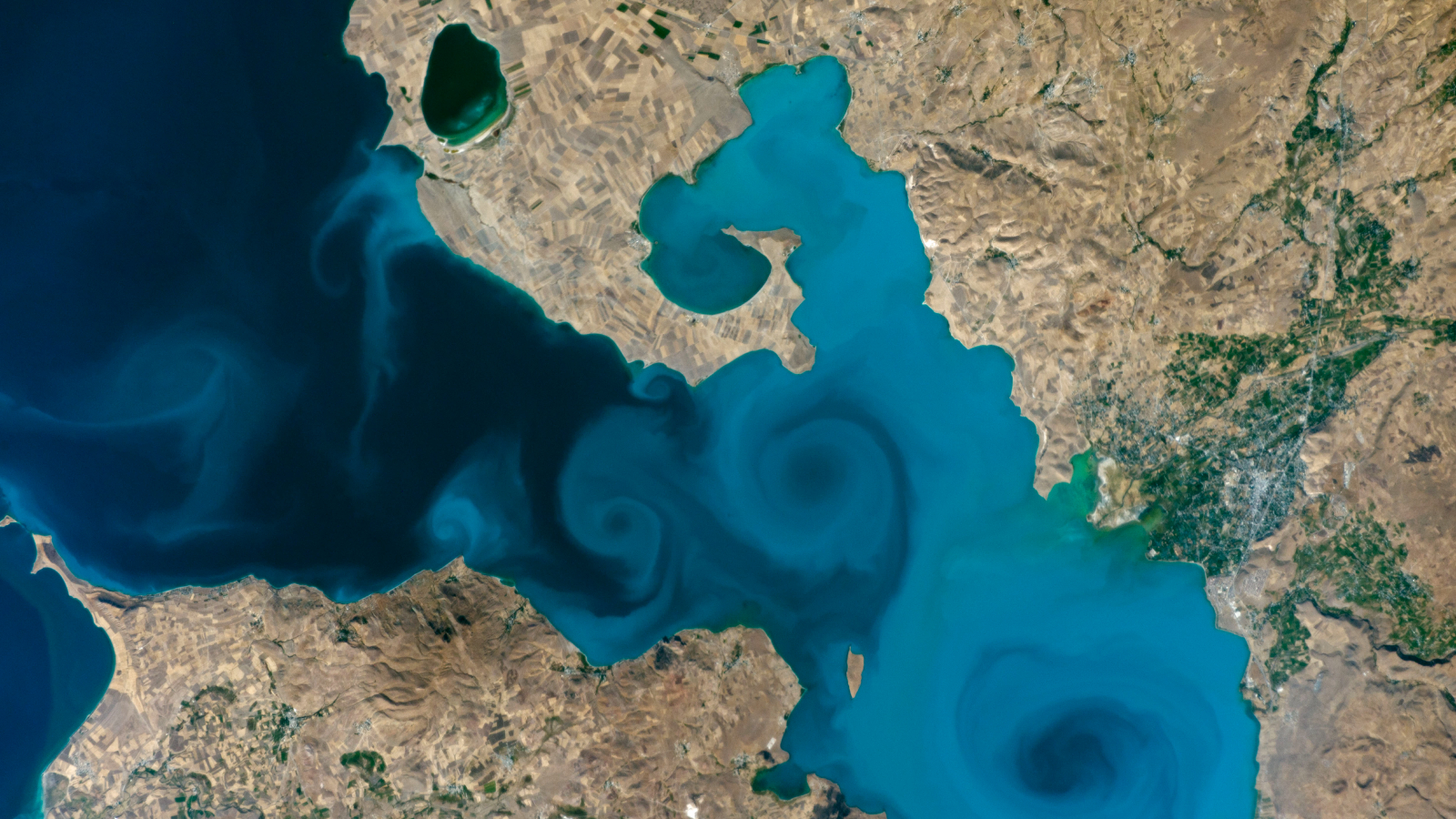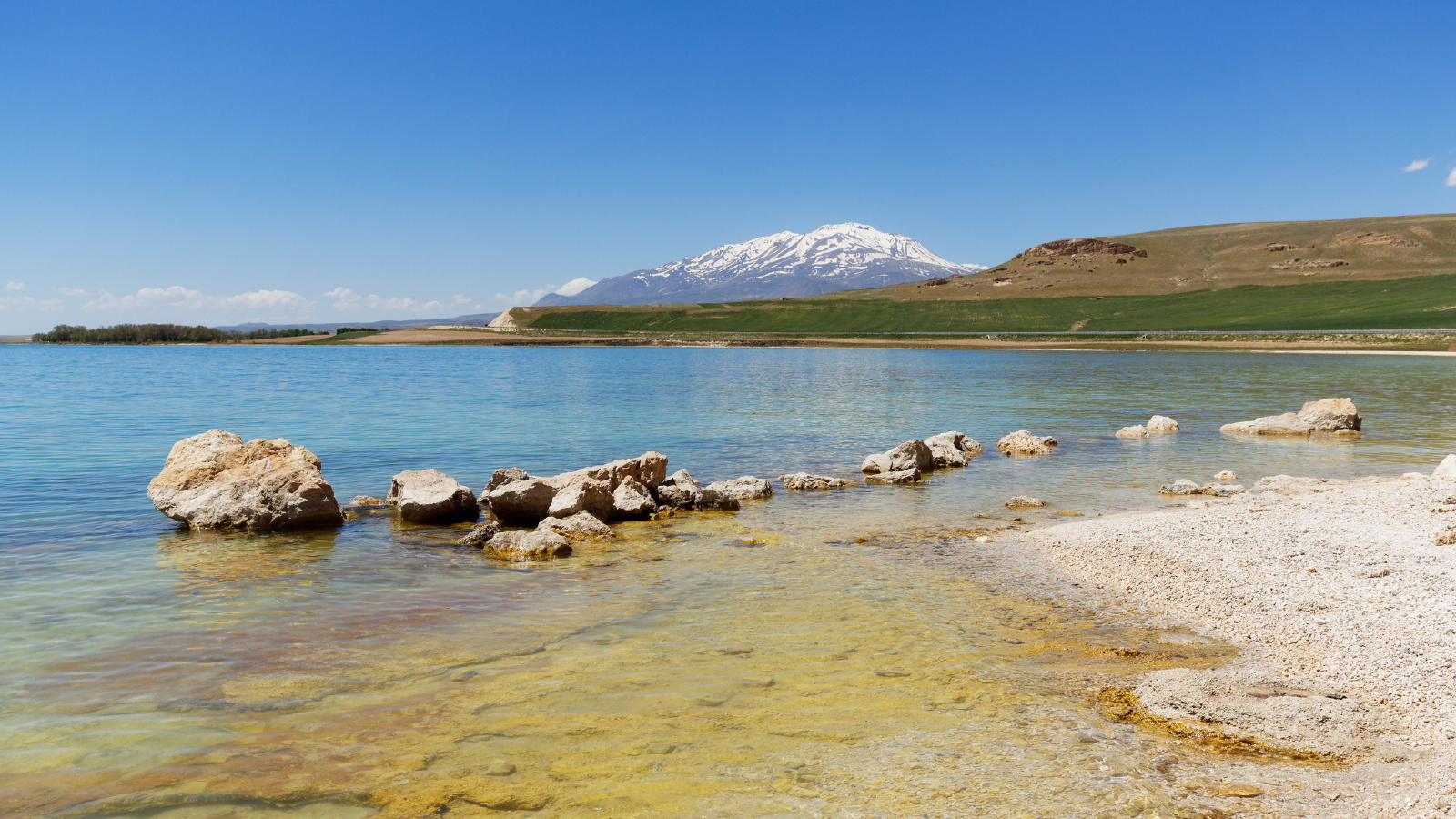Rare milky plumes paint stunning swirls in world's largest 'soda lake' — Earth from space
A 2016 astronaut photo shows surprising plumes of milky material swirling in the waters of Turkey's Lake Van, the largest alkaline lake on Earth.

Where is it? Lake Van, Turkey [38.91395038, 43.12483070]
What's in the photo? Rare plumes of mostly inorganic matter swirling in an alkaline lake
Who took the photo? NASA astronaut Kate Rubins, on board the International Space Station
When was it taken? Sept. 12, 2016
This stunning astronaut photo shows a series of milky swirls that appeared in the waters of Turkey's Lake Van, the largest "soda lake" on Earth. While the swirls look like a common natural phenomenon, they're actually something much rarer.
Lake Van is the largest lake in Turkey with a surface area of around 1,200 square miles (3,100 square kilometers), which is slightly smaller than Rhode Island. Its surface is located at an altitude of 5,380 feet (1,640 meters) above sea level and has a pH of around 10, which is highly alkaline.
The photo above shows a section of Lake Van around the city of Erciş, which is located along the lake's north shore. The swirls in the image look very similar to shapes that appear during algal blooms, when rapidly multiplying plankton species get caught up in wind-driven currents. However, this was not the cause of these swirls.
Instead, the milky material in the lake is mostly made up of calcium carbonate, as well as smaller concentrations of detritus — waste organic material left over from living and dead animals, according to NASA's Earth Observatory.
This milky swirls are known as "turbidity plumes," clouds of suspended material that are triggered by natural or human-caused disturbances to the lake floor. These plumes are more likely to appear in this part of the lake because the water level is shallower than the rest of the lake, which reaches a maximum depth of around 1,450 feet (450 m).
Related: See all the best images of Earth from space

Lake Van also has one of Earth's highest concentrations of "microbialite," a collection of free-floating organo-sedimentary structures formed by the trapping, binding and precipitation of minerals by various microbes. Microbialite production peaks in the spring and fall, when microbial communities multiply. However, this is not thought to be the cause of these particular swirls, according to the Earth Observatory.
Get the world’s most fascinating discoveries delivered straight to your inbox.
The lake's high pH levels are caused by high concentrations of carbonate salts, which have built up over time because the lake is "endorheic," meaning it does not have an outlet. Therefore, as water evaporates from the lake, the concentration of salts increases.
The salt concentration in the lake is so high that the water rarely freezes, even though its temperature frequently drops below 32 degrees Fahrenheit (0 degrees Celsius) during the winter months.
Lake Van's water levels have changed significantly over the last 600,000 years as changes in Earth's climate have altered the rates of water input and evaporation. A 2014 study estimated that its depth has fluctuated by around 2,000 feet (600 m) during this time.
While the large milky swirls in the photo are not caused by algal blooms, you can see small concentrations of phytoplankton that have accumulated along Erciş' coastline, as well as within a smaller lake located near the top of the image.

Harry is a U.K.-based senior staff writer at Live Science. He studied marine biology at the University of Exeter before training to become a journalist. He covers a wide range of topics including space exploration, planetary science, space weather, climate change, animal behavior and paleontology. His recent work on the solar maximum won "best space submission" at the 2024 Aerospace Media Awards and was shortlisted in the "top scoop" category at the NCTJ Awards for Excellence in 2023. He also writes Live Science's weekly Earth from space series.
You must confirm your public display name before commenting
Please logout and then login again, you will then be prompted to enter your display name.
